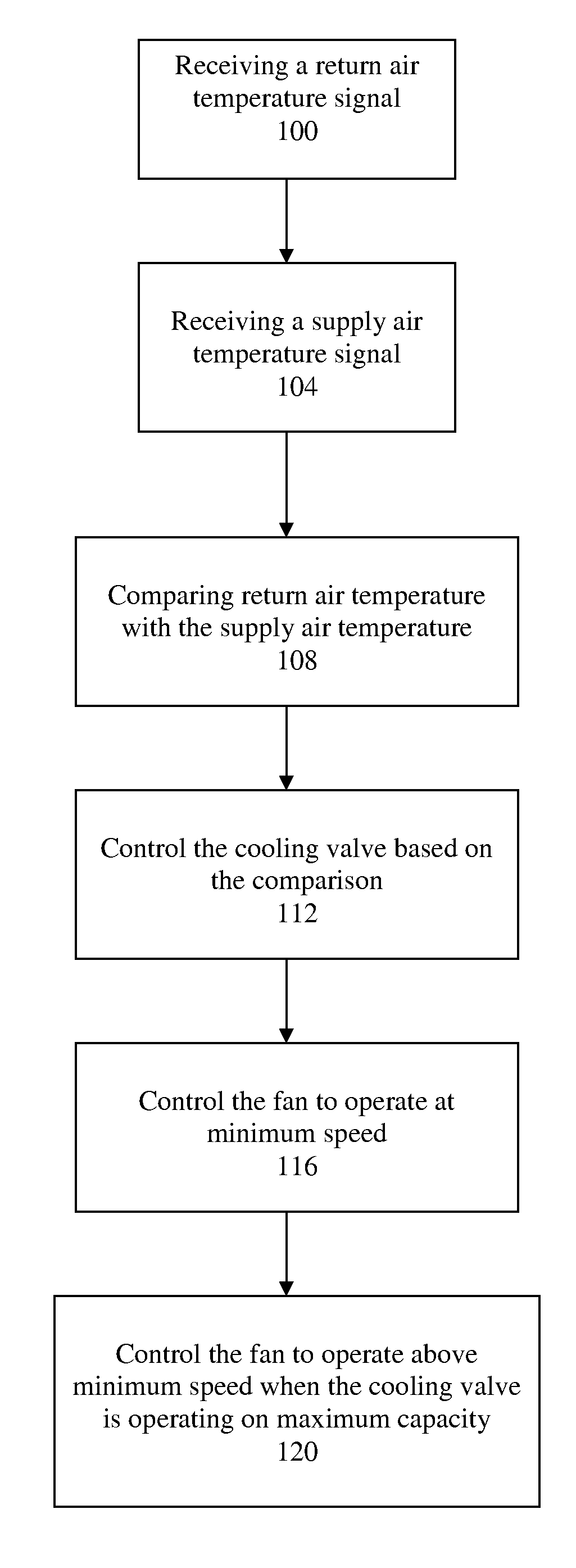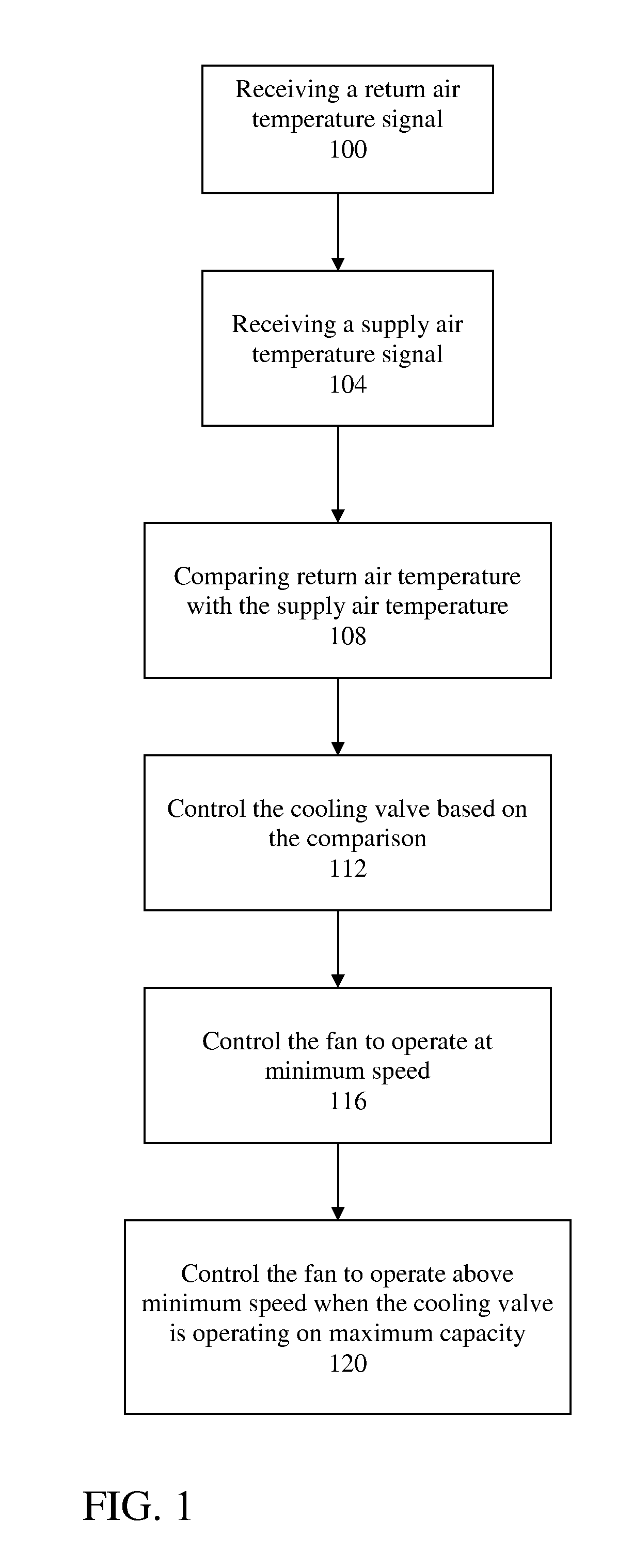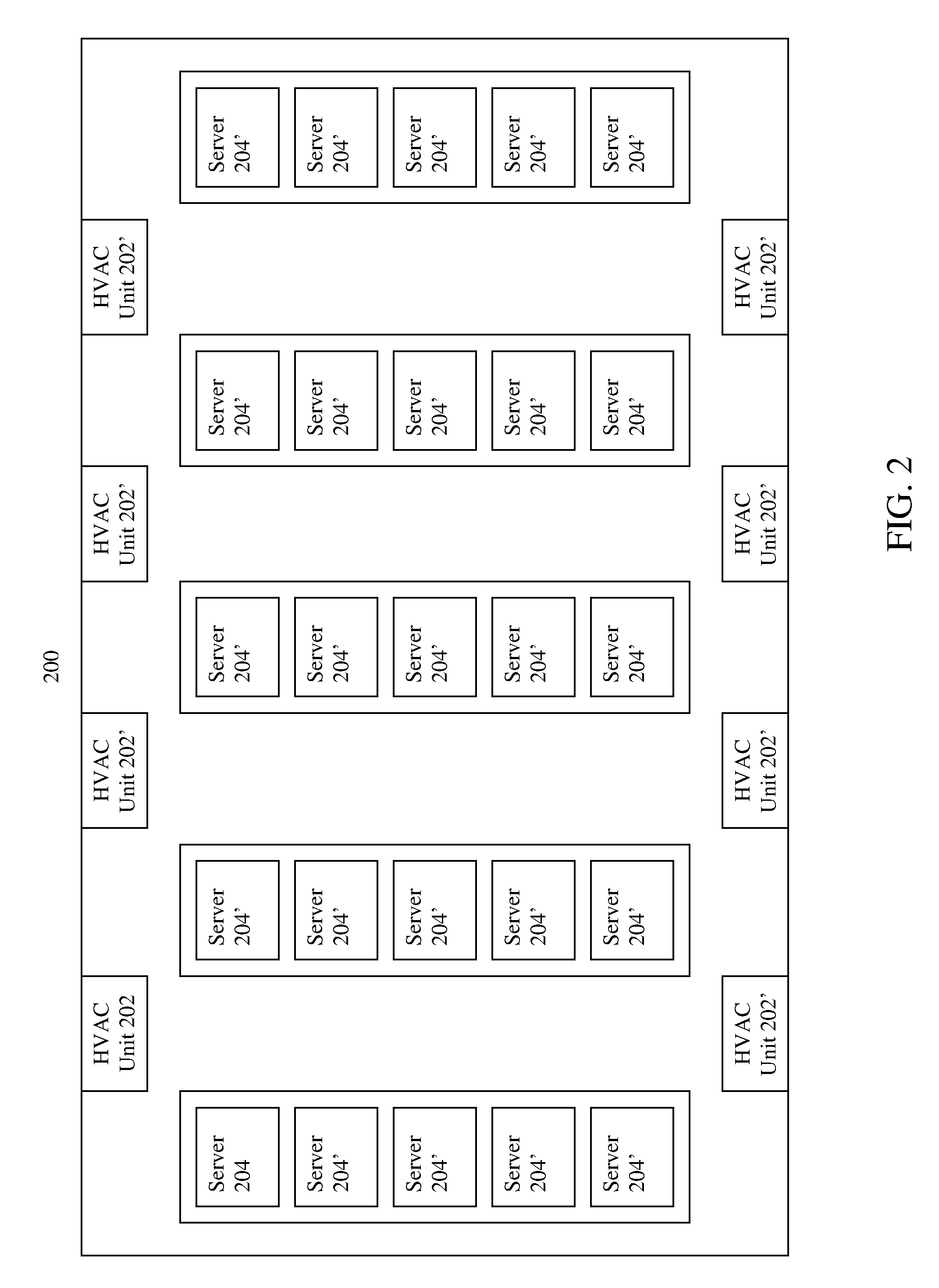Heating, Ventilation, and Air Conditioning Management System and Method
a management system and air conditioning technology, applied in the field of heating, ventilation and air conditioning (hvac) systems, can solve the problems of high operating costs of these systems, maintenance and electricity costs of a large hvac system, costing a company millions of dollars, etc., to achieve efficient maintenance of the temperature and air quality of the entire environment, reduce the temperature of the room, and avoid load hopping
- Summary
- Abstract
- Description
- Claims
- Application Information
AI Technical Summary
Benefits of technology
Problems solved by technology
Method used
Image
Examples
Embodiment Construction
[0019]Embodiments of the presently disclosed invention provide systems and methods for a heating, ventilation, and air conditioning (HVAC) system. Specifically, to efficiently maintain the temperature and air quality of an environment, the plurality of HVAC units of the system operates according to signals returned from each unit's return and supply air temperature sensors.
[0020]A method for configuring a heating, ventilation, and air conditioning system is provided in FIG. 1. The HVAC systems of the presently disclosed invention is configured to maintain the temperature of a room, first, by use of the cooling valves, and second and only when the capacity of the cooling valve has peaked, by use of the fans. At step 100, the HVAC units in the HVAC system are configured to receive a return air temperature signal. This signal provides the temperature of air entering each HVAC units. This temperature is likely to be the ambient temperature of the room or the air near each unit. Similarl...
PUM
 Login to view more
Login to view more Abstract
Description
Claims
Application Information
 Login to view more
Login to view more - R&D Engineer
- R&D Manager
- IP Professional
- Industry Leading Data Capabilities
- Powerful AI technology
- Patent DNA Extraction
Browse by: Latest US Patents, China's latest patents, Technical Efficacy Thesaurus, Application Domain, Technology Topic.
© 2024 PatSnap. All rights reserved.Legal|Privacy policy|Modern Slavery Act Transparency Statement|Sitemap



